How do you organize your response to a call for tenders ?

Date
July, 2025
Reading time
7 minutes
Category
Best practice
Peggy Herman
Co-founder and Managing Director of Bee4win, where she oversees the company’s consulting and pre-sales service activities. Since 2002, she has managed numerous public and private tenders, ranging from a few tens of thousands to several hundred million euros, in sectors as varied as IT, energy, industry and events.
An expert in pre-sales, Peggy continues to provide bid management and writing services, coaching and training. She has also been conducting studies on best practices in this field for over 10 years. Committed to the development of the pre-sales profession, she is president of the French-speaking chapter of APMP and a frequent speaker at events including the Bid and Proposal Conference Europe and Bee4win’s customers.
Key words
#Publicprocurement
#Advertisingthresholds
#DCE
You’ve been appointed to respond to a call for tenders or a consultation. Before you start writing the technical and commercial proposal, you’ll need to define how you and your response team will organize yourselves to produce this proposal.
This organization stage is crucial, as it will enable you to define how you are going to make the most effective use of the often limited time and resources available to you for responding.
In this article, I propose a 3-step approach to organizing your response to an invitation to tender:
- Analyze the requirement in detail,
- Plan the actions to be taken,
- Organize a kick-off meeting with your team.
1 - Take the time to analyze your needs in detail
You’ve certainly made a quick overall analysis of the opportunity, so that you can decide whether or not to respond to the call for tenders or consultation.
Once you’ve made the decision to respond, the detailed analysis will enable you to take this analysis one step further: the aim now is to have a complete, clear and exhaustive vision of the expected need, so that you can :
- Organize the preparation of the response, identify and prioritize the tasks to be carried out, evaluate the time and resources required to complete these tasks, and anticipate any problems that may arise.
- Identify ambiguities or contradictions in order to resolve them
- Establish the response strategy, identify strengths and weaknesses, in relation to the customer’s needs (including decision criteria) and the competition.
This represents a greater workload than the analysis carried out upstream of GO-NOGO’s decision; this effort is concentrated at the start of the pre-sales phase, and can continue throughout the preparation of the response, as new elements become known.
Here are a few recommendations for analyzing a consultation file in detail:
- Summarize the context of the project, the need and the stakes for the customer.
- Identify the client’s evaluation criteria and target budget, which will help you define your response strategy.
- List the deliverables (and their structure) that your response team will have to produce, and any associated constraints (format, number of pages, etc.).
- Prepare a blank question/answer table to share with the team, and add to it as you find points to clarify.
- If the volume of the consultation file is large, list all the documents it contains and indicate for each document the type of content it contains. This will save you and your team time by knowing which document to go to when you’re looking for information.
- Read the entire file to identify the requirements (at least the key requirements for which you’ll need specific expertise to prepare your response). Group your requirements in a requirements matrix, i.e. a table that lists requirements exhaustively and enables you to classify them into different categories and sub-categories, to be able to indicate requirement by requirement the level of compliance of the offer, and to trace for each requirement in which part of the response it is addressed.
- Prepare a list of points specific to the type of business and your company’s organization that you’d like to be particularly vigilant about, because they are likely to lead to specific actions to be taken in preparing the response. For example, are there any penalties, are they capped, are there any CSR or social integration clauses, are there any particular safety requirements, etc., and note the answers to all these points.
2 - Plan what needs to be done
As you analyze the need, you can begin to list the tasks that will need to be carried out to produce the answer. It’s not necessary to identify every task precisely at the outset of the project: at the very least, you should identify the tasks to be initiated in the first 1 or 2 weeks of response preparation, and the macro-tasks to be carried out up to the bid submission date.
Here are a few recommendations for planning the actions to be carried out:
- Each task must have one person in charge, plus any contributors (managed by the person in charge of the task): If this person has not yet been identified, note TBD and identify this as a point of vigilance to be dealt with as a priority, tracing the skills required and the estimated effort.
- Each task should be assigned a target date. If the date is a long way off, you can enter a week. The closer the date, the more precise it should be. Always specify a date, taking into account a safety margin based on the criticality of the task and whether or not the deadline for submission of bids is flexible.
- Each task should be assigned a status, for example: NEW, IN PROGRESS, URGENT, SUSPENDED, COMPLETED, ABANDONED. A color code allows you to see at a glance which tasks are in progress and which are urgent.
- Each task can be associated with an optional comment, to specify, for example, its dependence on another task, or what has been done and remains to be done for tasks in progress.
To save time:
- Feel free to create your own list of typical tasks to use as a template or checklist for each new VTA.
- Use a tool to formalize and then track these tasks (Excel or a planner tab in Teams, for example).
As with any project, many risks can arise during a pre-sales process and jeopardize your ability to deliver a winning bid on time: it’s therefore important to identify these risks as early as possible, and to make contingency plans for risks with a high probability or criticality (unforeseen absence of a key resource from your team, for example).
3 - Organize a meeting with your team to launch the preparation of your response
The purpose of this kick-off meeting is to :
- Share the new organization with the team
- Ensure that everyone knows what needs to be done and by when
- Create a team dynamic so that each contributor feels involved, motivated and useful
Who to invite ?
The people whose presence at this meeting is mandatory are those who will be the main contributors to the production of the technical and commercial offer: the Core Team. Ideally, the size of this Core Team should be between 2 and 5 people. Beyond 5, the coordination work is heavier, the meetings more time-consuming for everyone, and it’s harder to find slots where everyone is available for regular follow-up meetings.
When to plan it ?
Not too early … nor too late … You need to have had time to carry out the detailed analysis, to initiate the task list and to have identified all Core Team members and their roles.
Generally lasting around an hour, you can organize it physically if all those invited are on the same site, or remotely, via Teams.
How to prepare for the meeting :
- Prepare the collaborative workspace in which you’ll be able to share all the working documents and deliverables to be produced with your response team. Define a clear structure for this workspace from the outset, so that everyone can find the documents and information they’re looking for intuitively.
- Prepare a meeting document that brings together the key information from your detailed analysis, as well as a presentation of the organization in place (key milestones, team and individual roles, list of deliverables to be produced) and the actions to be carried out. Choose a format that can be used to support and report on the kick-off meeting and all subsequent progress meetings with your team. For this purpose, include areas such as highlights, priority actions and points of vigilance, to be completed at each meeting with your team.
Suggested agenda :
- Round table if people don’t know each other
- Reminder of project purpose, context, issues, key points to bear in mind (decision criteria, target budget, special requirements, etc.)
- Presentation of key milestones (reviews, deadline for questions, deadline for bid submission, etc.)
- Presentation of the list of deliverables to be produced and any associated constraints (format, number of pages, etc.)
- Presentation of team members and their roles, and sharing of any availability constraints (planned absences, etc.); choice of preferred means of communication.
- Presentation of the list of initiated tasks, and validation by each designated manager of the proposed assignment and target deadline.
- Scheduling of initial workshops (working meetings) if necessary, and regular follow-up meetings (frequency, fixed time slot or not, etc.).
- Questions
Remember to circulate a report at the end of the meeting, at least to the invited participants.
Adaptation to project size and complexity
In simple cases where you have few contributors, who know each other and are used to working together always with the same approach, the organization and launch can be formalized in a lighter way (e-mails, telephone, Teams discussions, etc.).
My recommendation, however, is to use a tool as often as possible to formally trace the understanding of the customer’s needs and the organization put in place, even for simple projects, based on a standard presentation template. This can be an Excel-type file. By using a predefined template, you’ll save time on formatting, listing typical tasks, using it both as a support and as a meeting report, and you’ll quickly know where to find what information.
By using a standard Excel template, you retain the possibility of adapting it to the context and complexity of each project.
Formalizing your analysis and organization enables you to have, at all times, a clear vision of what has been done and what remains to be done, shared with the Core Team. It also enables you to quickly get back to the essential elements of the project, either when the customer asks you questions, invites you to a presentation or requests a V2 a few weeks after the bid has been submitted, or once the project has been won, when you need to organize the actual start-up of the project.
Related Blog Articles

10 Good practices for responding to RFPs inspired by everyday Life

To bid or not to bid, that is the question

Key roles in the presales process

